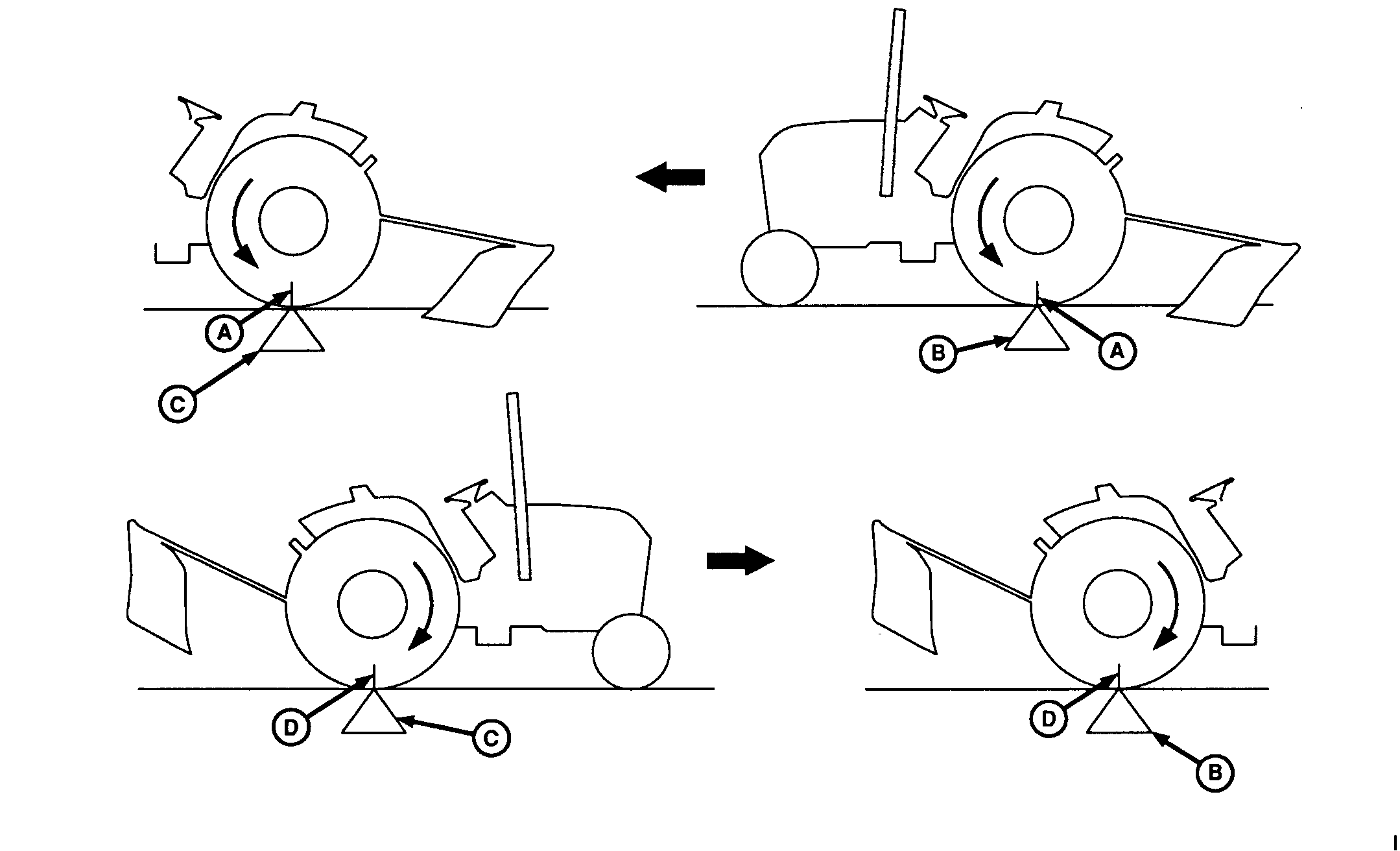Measure Wheel Slip (Manually)
-

LV733-UN-25JUN94A - First Mark on Rear Tire
B - Starting Point on Ground
C - Second Point on Ground
D - Second Mark on Rear Tire
Place a mark (A) on a rear tire which is easily observed (a chalk mark is recommended). -
With tractor working, mark a starting point (B) on the ground at the place where the tire mark (A) meets the ground.
-
Mark the ground again where the tire mark (A) completes 10 full revolutions (C).
-
With implement raised, return in the opposite direction. At the second mark on the ground (C) remark the tire (D).
-
While driving the tractor along the same path (implement raised), count the tire revolutions required to reach the starting point (B).
-
Use the return tire revolutions count and Wheel Slippage Chart to determine slippage. 10—15% for two-wheel drive or 8—12% for MFWD engaged tractors is ideal.
-
Adjust ballast or load to give correct slippage.
NOTE: Available horsepower is greatly reduced when wheel slip drops below 10%.
WHEEL SLIPPAGE CHART
Non-Loaded Wheel Revolutions (Step 5)
Estimated % Slip
Recommended Action
10
0
Remove Ballast
9-1/2
5
Remove Ballast
9
10
Proper Ballast
8-1/2
15
Proper Ballast
8
20
Add Ballast
7-1/2
25
Add Ballast
7
30
Add Ballast
|
PU00210,0000957-19-20090108 |